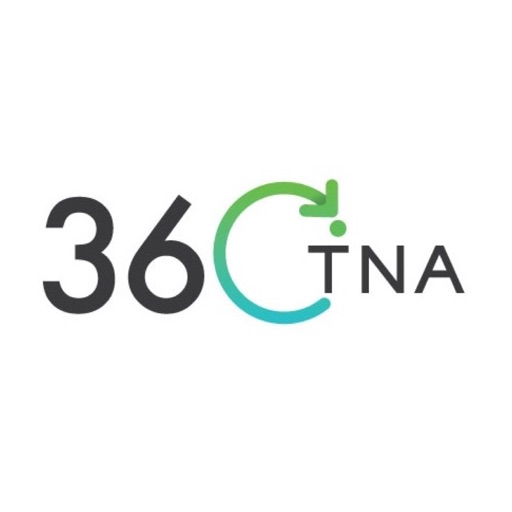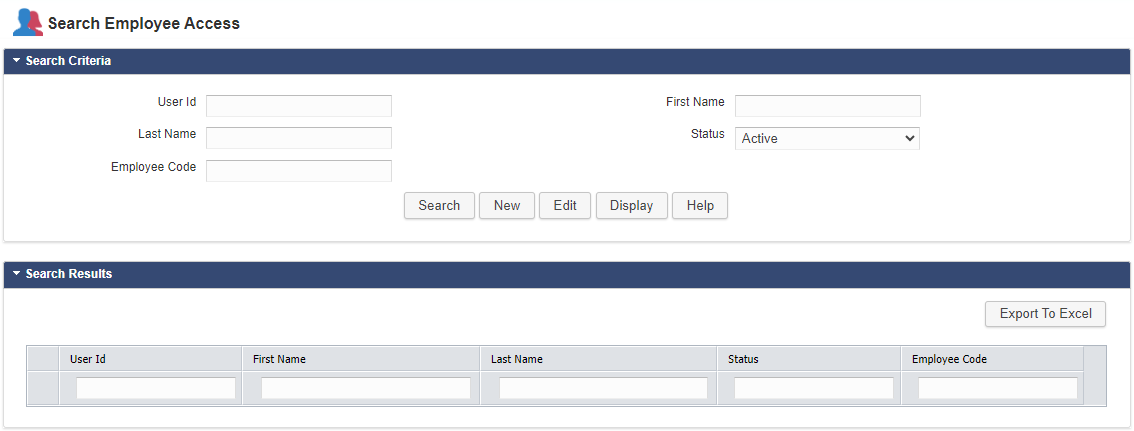- Home
- About Us
- Products
- Electronic Article Surveillance System EAS / Retail Anti theft Systems
- Display Stands
- Restaurant Pager
- People Counting Systems
- Queue Management Systems
- Access Control System
- Time Attendance Systems
- Audio & Visual System Solutions
- Display Solutions
- CCTV Cameras in Qatar: Enhancing Security Solutions
- Time Lapse Construction Camera
- Flap Barrier, Speed Gates, Turnstiles Access Control
- Gate Barriers System & Bollards in Qatar
- Parking Management & Gate Automation
- Library Management Systems
- IT & Telecom
- Lockers & Key Management Systems
- Intrusion Alarm System
- Perimeter Security
- Vehicle Tracking
- Time Recorders & Time Stamps
- Emergency Exit Door Alarms
- Clients
- Contact Us
- Support
Contents
- 1 360 TNA Time Attendance Systems : Understanding The software
- 2 Capturing Attendance Data
- 3 Storing and Processing Data
- 4 Accessing Reports and Analytics
- 5 Ensuring Accuracy and Compliance
- 6 1. Biometric Recognition Systems
- 7 2. RFID Attendance Systems
- 8 3. Facial Recognition Systems
- 9 Choosing the Right Model
- 10 1. Accuracy and Elimination of Buddy Punching
- 11 2. Enhanced Security
- 12 3. Streamlined Payroll Processing
- 13 4. Real-time Monitoring and Reporting
- 14 1. Ensure Proper Implementation
- 15 2. Provide Training and Education
- 16 3. Regular Maintenance and System Checks
- 17 4. Promote User Adoption and Compliance
- 18 5. Integration and Scalability
360 TNA Time Attendance Systems : Understanding The software
In the fast-paced realm of modern business operations, managing employee attendance efficiently is crucial for productivity and compliance. This is where 360 TNA Time Attendance systems play a pivotal role. These systems integrate cutting-edge technology to streamline attendance tracking, enhance workforce management, and optimize payroll processes.
What are 360 TNA Time Attendance Systems?
360 TNA time attendance systems are advanced solutions designed to accurately record and monitor employee attendance. Unlike traditional methods like punch cards or manual registers, 360 TNA Time Attendance systems utilize biometric recognition, RFID (Radio Frequency Identification), or facial recognition technologies for precise and secure attendance tracking.
How do 360 TNA Time Attendance Systems Work?
360 TNA Time Attendance systems operate at the intersection of hardware and software, employing advanced technologies to streamline the process of capturing, managing, and analyzing employee attendance data. Here’s a detailed expansion on how these systems work:
Capturing Attendance Data
360 TNA Time Attendance systems utilize various methods to capture employee attendance:
- Biometric Recognition: One of the most secure methods, biometric systems identify individuals based on unique biological traits such as fingerprints, iris patterns, or facial features. Employees register their biometric data during initial setup, and subsequently, they can clock in and out by scanning their fingerprint, iris, or face at designated terminals.
- RFID (Radio Frequency Identification): This method involves issuing RFID cards or tags to employees. Each RFID tag contains a unique identifier that associates it with a specific employee. Employees tap or swipe their RFID badges at RFID readers installed at entry points to record their attendance.
- Facial Recognition: Advanced facial recognition systems use AI algorithms to analyze and identify unique facial features of employees. Employees simply need to stand in front of a facial recognition terminal, which captures and matches their facial characteristics against stored data to record attendance.
Storing and Processing Data
Once attendance data is captured, it is securely stored and processed using integrated software systems. Key aspects of this process include:
- Secure Storage: Attendance data, especially biometric information, is encrypted and stored securely to prevent unauthorized access and ensure compliance with data protection regulations like GDPR.
- Automated Processing: Integrated software automatically processes attendance data in real-time. It calculates work hours based on clock-in and clock-out times, factors in overtime hours, and deducts leave balances as per company policies.
- Integration with HR and Payroll Systems: 360 TNA Time Attendance systems often integrate seamlessly with existing HR and payroll software. This integration ensures that attendance data flows directly into payroll systems, reducing manual data entry and minimizing errors.
Accessing Reports and Analytics
Managers and administrators benefit from real-time access to attendance reports and analytics:
- Real-time Reporting: Managers can generate attendance reports instantly, allowing them to monitor employee attendance patterns, identify trends, and take timely actions.
- Analytics for Decision Making: Advanced analytics capabilities provide insights into absenteeism rates, late arrivals, and overall workforce attendance behavior. This data helps managers make informed decisions to improve workforce management and operational efficiency.
Ensuring Accuracy and Compliance
360 TNA Time Attendance systems offer several features to ensure accuracy and compliance:
- Elimination of Buddy Punching: Biometric and facial recognition systems reduce fraudulent practices like buddy punching, where employees clock in or out for absent colleagues.
- Audit Trails: Detailed audit trails track every attendance transaction, providing a clear record of employee attendance activities for compliance audits.
- Customizable Policies: Administrators can configure attendance policies within the system to align with company rules and regulatory requirements, ensuring fair and consistent application across the organization.
Different Models in 360 TNA Time Attendance Systems
In the realm of 360 TNA Time Attendance systems, various models cater to diverse organizational needs, each offering unique advantages in terms of functionality, security features, and user preferences. Here’s an expanded look into the different models:
1. Biometric Recognition Systems
Biometric recognition systems are renowned for their high level of accuracy and security. They authenticate employees based on unique biological characteristics such as fingerprints, iris patterns, or even palm prints. Here’s how each method works:
- Fingerprint Recognition: Employees register their fingerprints during initial setup. To clock in or out, they simply place their finger on a biometric scanner, which captures the unique patterns and ridges of their fingerprint. This method is highly accurate and eliminates the possibility of buddy punching.
- Iris Recognition: This method scans the unique patterns in an individual’s iris, which are highly distinct even among identical twins. Employees stand in front of an iris scanner, and the system captures and matches the iris pattern against stored data to verify identity.
- Palm Vein Recognition: Utilizing near-infrared light to capture the unique vein patterns in an employee’s palm, this method offers a contactless yet secure way to verify identity.
Advantages:
- High Accuracy: Biometric systems provide extremely accurate identification, reducing errors associated with manual methods.
- Enhanced Security: Biological characteristics are difficult to duplicate or forge, enhancing security against unauthorized access.
- User Convenience: Employees find biometric systems easy to use without needing to carry additional cards or remember passwords.
2. RFID Attendance Systems
RFID (Radio Frequency Identification) systems use radio waves to identify and track employees via RFID cards or tags. Each card or tag contains a unique identifier that is read by RFID readers installed at entry points. Here’s how RFID systems operate:
- RFID Cards or Tags: Employees are issued RFID cards or tags that they carry with them. To register attendance, employees tap or swipe their RFID card/tag near an RFID reader.
- Instant Recognition: RFID technology allows for quick recognition without physical contact, making it convenient for high-traffic areas.
Advantages:
- Speed and Efficiency: RFID systems enable fast and efficient attendance tracking, ideal for organizations with large numbers of employees.
- Cost-effective: RFID cards or tags are durable and reusable, reducing ongoing operational costs compared to other methods.
- Versatility: Suitable for various environments, from office buildings to manufacturing plants, where durability and reliability are critical.
3. Facial Recognition Systems
Facial recognition systems use advanced AI algorithms to analyze and identify employees based on their facial features. This method offers a contactless and hygienic way to record attendance:
- Facial Biometrics: Employees’ facial features, such as the distance between the eyes and the shape of the nose and jawline, are captured and analyzed for identification.
- Non-invasive: Employees simply stand in front of a facial recognition terminal, which captures and matches their facial characteristics against stored data.
Advantages:
- Contactless Operation: Particularly beneficial in environments where hygiene and minimal physical contact are priorities.
- High Accuracy: Advanced AI ensures precise identification, even in varying lighting conditions.
- User Acceptance: Employees find facial recognition systems intuitive and easy to use, enhancing adoption rates.
Choosing the Right Model
The selection of a 360 TNA Time Attendance systems model depends on several factors including:
- Security Requirements: Organizations needing stringent security measures might opt for biometric systems due to their high accuracy and difficulty to spoof.
- Operational Environment: Environments with high foot traffic or where hygiene is critical may prefer RFID or facial recognition systems for their contactless operation.
- Employee Preferences: Considering user acceptance and ease of use can influence the choice of system to ensure smooth adoption across the organization.
Benefits of 360 TNA Time Attendance Systems
Implementing 360 TNA Time Attendance systems systems offers numerous benefits that significantly enhance operational efficiency, security, and management capabilities within organizations. Here’s an expanded look at the key advantages:
1. Accuracy and Elimination of Buddy Punching
360 TNA Time Attendance systems, especially those utilizing biometric and facial recognition technologies, ensure precise attendance records by uniquely identifying employees based on their biological characteristics or facial features. This method effectively eliminates the possibility of buddy punching, where employees fraudulently clock in or out on behalf of their colleagues. The benefits include:
- Elimination of Fraud: Biometric systems authenticate employees based on their unique traits such as fingerprints, iris patterns, or facial characteristics, ensuring that only authorized personnel can record attendance.
- Increased Accuracy: By relying on biometric data, attendance records are accurate and reliable, reducing discrepancies and errors associated with manual or card-based systems.
- Improved Compliance: Ensures adherence to labor regulations and policies by accurately tracking hours worked and reducing opportunities for manipulation of attendance data.
2. Enhanced Security
Security is paramount in managing employee data and attendance records. 360 TNA Time Attendance systems employ advanced encryption techniques and secure storage methods to safeguard sensitive information:
- Biometric Data Encryption: Biometric templates (e.g., fingerprint scans, facial images) are encrypted and securely stored, preventing unauthorized access and ensuring data integrity.
- Protection Against Fraud: Robust security measures deter fraudulent activities and unauthorized access attempts, maintaining the confidentiality and privacy of employee information.
- Compliance with Regulations: Systems comply with data protection regulations (e.g., GDPR) by implementing stringent security protocols for handling biometric and personal data.
3. Streamlined Payroll Processing
Automated calculations and integration with payroll systems streamline administrative tasks related to payroll management:
- Automatic Time Calculation: The system automatically calculates work hours, overtime, and leave balances based on recorded attendance data, reducing manual input and potential errors.
- Efficiency Gains: Saves time and effort for HR personnel involved in payroll processing, allowing them to focus on strategic tasks rather than manual data entry.
- Cost Reduction: Minimizes payroll errors and discrepancies, which can lead to cost savings associated with overpayments or underpayments.
4. Real-time Monitoring and Reporting
Access to real-time attendance data and analytics empowers managers and administrators to make informed decisions promptly:
- Immediate Visibility: Managers can monitor attendance patterns, track late arrivals or absences in real-time, and take corrective actions promptly.
- Data-driven Decisions: Analytics tools provide insights into workforce attendance trends, enabling proactive management strategies and resource allocation.
- Remote Accessibility: Managers can access attendance reports and analytics remotely via web-based interfaces or mobile applications, facilitating quick decision-making regardless of their location.
How to Use 360 TNA Time Attendance Systems Effectively
Effectively utilizing 360 TNA Time Attendance systems systems involves more than just installation; it requires a comprehensive approach to ensure seamless operation, user adoption, and long-term reliability. Here’s an expanded guide on how organizations can maximize the benefits of 360 TNA Time Attendance systems:
1. Ensure Proper Implementation
Proper implementation is fundamental to the successful deployment of 360 TNA Time Attendance systems. This involves:
- Detailed Planning: Conduct a thorough assessment of organizational needs and objectives to determine the most suitable type of 360 TNA Time Attendance systems (e.g., biometric, RFID, facial recognition).
- System Configuration: Ensure the system is configured according to organizational policies and requirements. This includes setting up access controls, defining attendance rules (e.g., work hours, break times), and integrating with existing HR and payroll software if applicable.
- Quality Installation: Engage experienced technicians or professionals to install hardware components (e.g., biometric scanners, RFID readers) at strategic locations within the organization. Ensure all devices are properly calibrated and connected to the network.
2. Provide Training and Education
Training is crucial to ensure that employees and administrators understand how to use the 360 TNA Time Attendance systems effectively and comply with organizational policies:
- User Training: Conduct comprehensive training sessions for employees on how to clock in and out using the system, interpret error messages, and utilize additional features (e.g., requesting leave, checking attendance history).
- Administrator Training: Train HR personnel and system administrators on system administration tasks such as adding new employees, configuring system settings, generating reports, and troubleshooting common issues.
- Continuous Education: Provide ongoing training sessions or refresher courses as needed, especially when updates or new features are introduced to the system.
3. Regular Maintenance and System Checks
To ensure optimal performance and longevity of the 360 TNA system, regular maintenance and proactive monitoring are essential:
- Scheduled Maintenance Checks: Establish a schedule for routine maintenance checks by qualified technicians. This includes inspecting hardware components for wear and tear, testing software updates, and verifying data backups.
- Performance Monitoring: Monitor system performance metrics such as response times, error rates, and user feedback to identify potential issues early and take corrective actions promptly.
- Security Audits: Conduct periodic security audits to assess data protection measures, review access logs, and ensure compliance with regulatory requirements (e.g., GDPR).
4. Promote User Adoption and Compliance
Encouraging user adoption and ensuring compliance with attendance policies are key to maximizing the benefits of 360 TNA systems:
- Communicate Benefits: Highlight the advantages of the new system to employees, such as accuracy in recording attendance, streamlined processes, and enhanced security.
- Address Concerns: Address any concerns or misconceptions employees may have about biometric data privacy, system reliability, or changes in attendance policies.
- Feedback Mechanisms: Establish channels for employees to provide feedback on their experience with the system and address any usability issues or suggestions for improvement.
5. Integration and Scalability
Ensure the 360 TNA system is designed to integrate seamlessly with other organizational systems and can scale with future growth:
- Integration Capabilities: Verify compatibility with existing HRIS (Human Resource Information Systems) and payroll software to streamline data flow and avoid duplication of effort.
- Scalability Planning: Consider future organizational growth and scalability requirements when selecting the system. Ensure it can accommodate increasing numbers of employees, additional locations, or enhanced functionalities.
- Vendor Support and Updates: Stay updated with vendor-provided software updates, patches, and new features to leverage improvements in system performance and security.
Common FAQs about 360 TNA Time Attendance Systems
Q: Are 360 TNA systems GDPR compliant? A: Yes, reputable systems comply with GDPR regulations by ensuring data protection and user consent.
Q: Can these systems integrate with existing HR software? A: Yes, many 360 TNA systems offer integration capabilities with popular HR and payroll software.
Q: What happens if there is a power outage? A: Systems usually have backup options like battery backups or offline storage to prevent data loss during outages.
Case Studies: Real-world Applications of 360 TNA Time Attendance Systems
- Case Study 1: Retail Chain Efficiency
- Challenge: A retail chain struggled with manual attendance tracking and payroll errors.
- Solution: Implemented a biometric 360 TNA system across all stores.
- Outcome: Reduced payroll errors by 30% and improved attendance accuracy by 95%.
- Case Study 2: Manufacturing Plant Security
- Challenge: A manufacturing plant faced security breaches due to outdated access control.
- Solution: Integrated RFID-based 360 TNA system for both attendance and access control.
- Outcome: Enhanced security with a 50% reduction in unauthorized access incidents.
Contact Axle Systems for Distributorship of 360 TNA Time Attendance Systems in Qatar
Axle Systems offers a comprehensive range of 360 TNA time attendance systems tailored to meet the diverse needs of businesses in Qatar. Whether you are looking to enhance security, streamline payroll processes, or improve workforce management, Axle Systems provides cutting-edge solutions backed by expert support.
To learn more about distributorship opportunities or to request a consultation, contact Axle Systems today. Our team of specialists will assist you in choosing the right 360 TNA system that aligns with your business objectives and regulatory requirements.
In conclusion, 360 TNA time attendance systems represent a significant advancement in workforce management technology, offering unparalleled accuracy, security, and efficiency. By investing in these systems, businesses can optimize operations, reduce costs, and foster a more productive work environment.
By leveraging Axle Systems’ expertise and solutions, organizations in Qatar can stay ahead in the competitive landscape while ensuring compliance and security in attendance management. For more information, visit Axle Systems’ website or contact us directly to explore how 360 TNA systems can transform your business operations.





